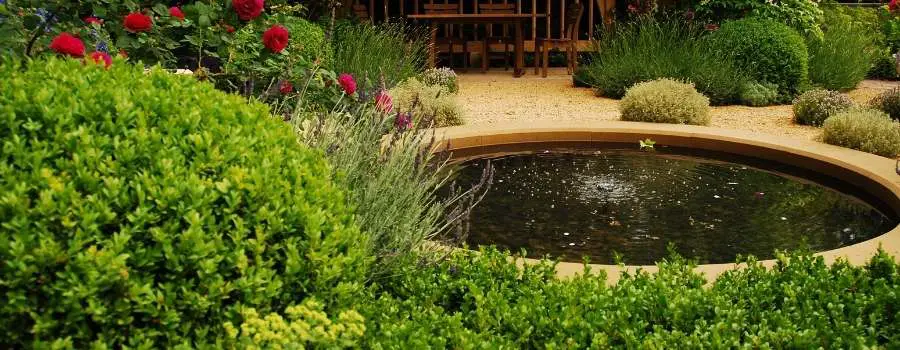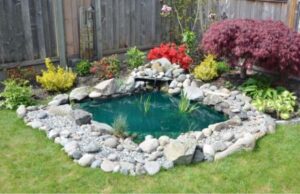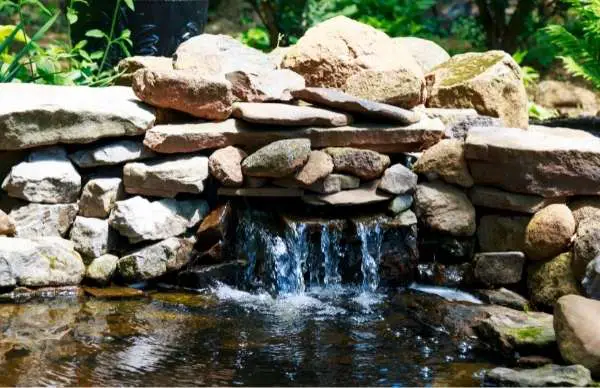The idea behind solar aerators is that they will provide oxygen for ponds or pool. The oxygen will provide air for fish and also keep the water slightly agitated (in motion) to prevent pond scum and algae from building up.
In general, solar aerators are great at keeping ponds and other small bodies of water oxygenated for fish and other aquatic animals. Solar aerators also help in keeping algae and pond scum from building up since they keep the water in a constant state of gentle motion.
There are all sorts of things to consider, this guide will help steer you in the right direction and get your pond, pool, or lake aerated in no time!

What Should You Consider When You Buy A Solar Aerator?
Typically, you will want your solar powered aerator to be large enough for the body of water you plan to use it in. Other considerations include type, capacity, output, price, and function of the aerator. All of these factors can vary depending on the type or brand of aerator.
Types
There are two main types of solar aerators that you can choose from. There is the surface aerator and the subsurface aerator.
The subsurface aerator gets placed under the water. It blasts oxygen into the water from below the surface. This helps to diffuse ammonia, carbon dioxide, and other harmful chemicals through the stone diffuser.
The floating aerator is floating on the pond, which distributes oxygen and helps to keep the water in the pond from becoming stagnant.
There is an assortment of decorative shapes that you can pick from, which helps to make your pond even more beautiful than it already is. This provides an ample amount of oxygen to your pond, especially if it is a smaller pond.
The surface aerator stands out from the floating aerator because it has a small air pump. There is no electricity or extra wiring that is involved when you buy a solar powered aerator. This is an aerator that will work well when you place it under direct sunlight.
This is a great option for a solar powered aerator during the spring and summer months. It is particularly efficient in small ponds and small water tanks. It quickly loses its efficiency when it is used in a larger pond.
Location

It is important to remember that for your solar powered aerator to work, you have to keep it in direct sunlight. Thus, when you pick a location, you need to make sure that the solar powered aerator will be exposed to the sun nearly constantly.
You should also think about the size of the aerator when you pick a spot to put it in.
You need to make sure that the aerator has enough space in the pond or pool to operate in. If you happen to be living in a place that does not get a lot of sunlight, you will probably have to look for a different alternative to getting a solar powered aerator.
Capacity
You also have to think about the capacity of the solar powered aerator that you are looking at before you buy it. Make sure that you choose the right capacity so that your aerator can deliver the proper amount of oxygen to your pool or pond.
You can look at the GPH to make sure that the capacity of the solar powered aerator that you are looking at will work with the size of the pool or pond that you have. This is the number of gallons that the aerator can treat every single hour.
For example, a solar powered aerator that has a 300 GPH rating will be able to deliver oxygen to a pond or pool with roughly two thousand gallons of water in it.
Solar Panel Size
The size of the solar panels on the solar powered aerator are another important factor that you need to consider. These absorb the solar energy from the sun and convert it into usable electricity to oxygenate the pool or pond you use it in.
If you purchase a solar powered aerator with larger solar panels, that solar panel aerator will be able to take in more oxygen than one with small solar panels.
The right size solar panels for your solar powered aerator will largely depend on how big of a pond or pool you are using the device in.
If you have a large pond or pool, you will need to get a solar powered aerator that has large solar panels on it. If you have a small pond or pool, you will need to look for a solar powered aerator that has small solar panels.
Battery Size
Another important factor that you need to take into consideration when you look for a solar powered aerator to purchase is the size of the battery. This will affect how well your solar powered aerator works when it is not receiving direct sunlight exposure, such as when it is operating at night.
When you look for a solar powered aerator to purchase, you should make note of the battery life that is listed with the product. You want to find a good solar powered aerator with a strong battery that will last for at least four to five hours or more.
Backup Battery
You also need to look for a solar powered aerator that has a backup battery included.
This is important if you want to keep the solar powered aerator running around the clock, even at night. You can recharge the backup battery while the solar powered aerator is getting blasted with direct sunlight exposure, so it charges in addition to the main battery.
If you recharge both the main battery and the backup battery during the day by exposing them to the sunlight, you can run the solar powered aerator all throughout the night without ever losing power.

Water Flow
This is another factor that will be an important part of your decision in what solar powered aerator to purchase. The amount of water that your aerator can handle will depend on its power. You can look at your aerator’s wattage to determine how much power it has and how much water it can handle.
Price
You should also consider the price. The price of a solar powered aerator can vary wildly. You should do careful research to find a solar powered aerator that fits within the price range that works for your budget.
What Are The Benefits Of A Solar Aerator?
In general, a solar powered aerator is going to provide all of the same benefits as a non solar model plus save you money since solar energy is free. Solar aerators are also incredibly easy to use since there is no wiring or complicated setup.
There are lots of benefits that come with using a solar powered aerator over a more traditional alternative. Some of these benefits include:
- Ease of Use – It is easy to set up and install a solar powered aerator. You do not even have to do any wiring or electrical work when you purchase one of these. This makes them much easier to install than non-solar powered aerators. With this simplified process, all you need to do is put the aerator in the sunlight and you are ready to go.
- Running Costs – One of the main benefits of a solar powered aerator is that they are not a drain on your electrical resources. Because they are solar powered, they are completely self-sustaining in terms of electricity. A solar powered aerator will not raise your electrical bill at all.
- Portability – Another one of the benefits of getting a solar powered aerator is that they are much more portable than non-solar powered aerator alternatives. You can adjust them to fit the specific needs of your pond or pool. They also do not weigh much or take up a lot of physical space, so you can take them almost anywhere.
- Environmental Impact – Of course, the best part of owning a solar powered aerator is the environmental impact. Or rather, the lack of environmental impact. As a solar powered product, these are safe to use, and you do not have to worry about harming the environment when you use them.
Final Thoughts
A solar powered aerator is a machine that mixes oxygen into a body of water. This is usually a pond, pool, or lake. They help prevent water from becoming stagnant and they help stop algae from forming on the surface of the water.
There are different types of solar powered aerators and a variety of factors that you need to consider in order to purchase the one that is right for you.
The two main types of solar powered aerators are surface aerators and subsurface aerators. There are factors to consider such as size, portability, battery components, cost, ease of use, and electrical power. Once you find the one that works for you, this is a great eco-friendly way to oxygenate your pond.

